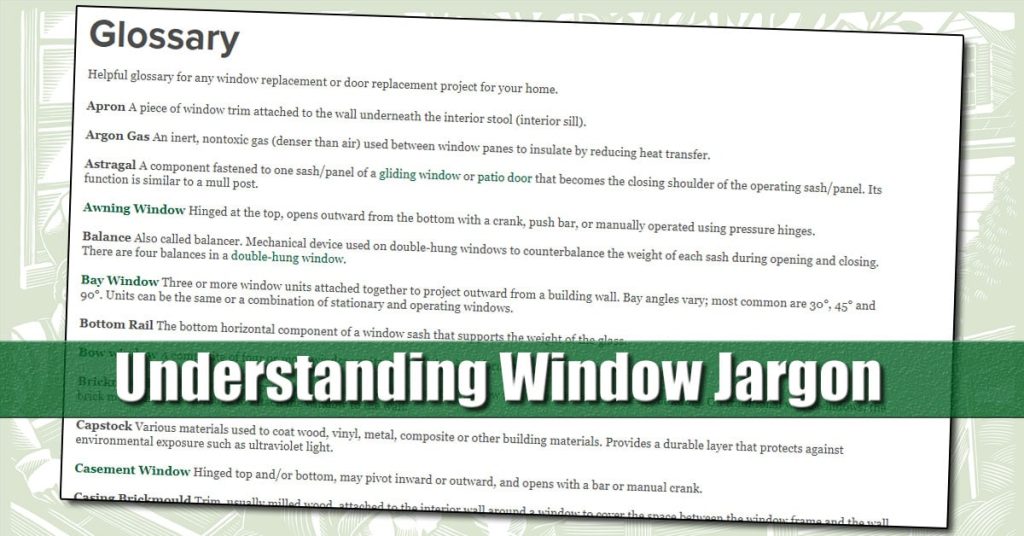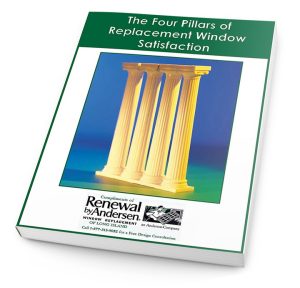

If you don’t have extensive knowledge about traditional window parts and performance, deciphering window product descriptions is confusing for most Long Island homeowners. Terms like sash, mullions, jambs and headers come up often when gathered around the water cooler or visiting with friends over a cup of coffee. And, unless you are talking to a window dealer, contractor or a friend or family member that has recently updated their home, you probably won’t hear anything about energy-efficiency coefficients and ratings. This Renewal by Andersen blog will give you some useful information to help you understand those product descriptions, and some links to learn more. Naturally, you can always give us a call if you want more information about replacement window parts or performance.
Most people call the stool a sill because almost everyone has at one time or another seen a small potted plant or other knickknacks displayed on this ledge, and most people refer to this piece as a window sill. In reality, the sill is on the exterior and is the piece of the window at the bottom of the unit that holds the window together. It is designed to channel water away from the house so rainwater doesn’t puddle and damage your window, or create a breeding ground for mosquitoes and other insects who lay their eggs in standing water. It is important to know whether a dealer is talking about the internal or external ledge as you read online content. If you run across a term you aren’t familiar with, check out this replacement window glossary, which includes dozens of window part definitions, from Apron to Window Hardware.
This question is a tricky one. Some people think that a “lifetime warranty” means as long as the owner is alive, they can expect the window to keep performing perfectly. Others assume that if a product fails, they should always be able to access no-cost repair or replacement unless the window is destroyed by intentional damage or a natural disaster like a fire or tornado. In reality, most replacement window and patio door dealers establish an industry standard for their own products based on market research and internal testing. Some unscrupulous dealers have very limited coverage that gradually declines rapidly, similar to the way a car tire’s life is prorated over a period of years.
If you aren’t sure what the dealer is offering, ask for clarification before signing a contract for purchase. It is also important to ask if there is a fee with the transferable warranty. We have heard that some companies actually charge a few hundred dollars to transfer warranty coverage to the new owners if you sell your home. You can download our warranty, or stop by the showroom for more information about claims associated with factory defects, installation coverage and our repair or replace policy. Your performance warranty will not usually cover a window failure due to abuse, intentional damage caused by you or another party, or weather events.
There are five key replacement window metrics that we recommend every Long Island homeowner get familiar with before they decide which replacement window they will buy to boost energy-efficiency in their home. These are:
Learn more about each of these ratings, established by outside agencies like the National Fenestration Rating Council (NFRC) which tests windows and skylights and sets industry performance standards.
Gather all the information you need to make sound buying decisions about updating your Long Island home with high-performance replacement windows. Whether you are looking for a unique bay window configuration or you want to replace all of your wood framed, single pane windows with beautiful no-maintenance, composite framed, casements, we have the resources to help you make a sound investment. Have more questions? Simply fill in the short form on this page and we will get back to you ASAP. Want to schedule an in-home consultation? Dial (866) 609-5033 and speak to a professional replacement window specialist today.

Learn Everything You Need to Know BEFORE Buying Replacement Windows